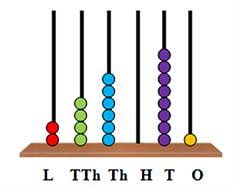CTET & State TET Exam > CTET & State TET Tests > Test: Numbers - 5 - CTET & State TET MCQ
Test: Numbers - 5 - CTET & State TET MCQ
Test Description
20 Questions MCQ Test - Test: Numbers - 5
Test: Numbers - 5 for CTET & State TET 2025 is part of CTET & State TET preparation. The Test: Numbers - 5 questions and answers have been prepared
according to the CTET & State TET exam syllabus.The Test: Numbers - 5 MCQs are made for CTET & State TET 2025 Exam.
Find important definitions, questions, notes, meanings, examples, exercises, MCQs and online tests for Test: Numbers - 5 below.
Solutions of Test: Numbers - 5 questions in English are available as part of our course for CTET & State TET & Test: Numbers - 5 solutions in
Hindi for CTET & State TET course.
Download more important topics, notes, lectures and mock test series for CTET & State TET Exam by signing up for free. Attempt Test: Numbers - 5 | 20 questions in 20 minutes | Mock test for CTET & State TET preparation | Free important questions MCQ to study for CTET & State TET Exam | Download free PDF with solutions
Test: Numbers - 5 - Question 1
What is the place value of the underlined digit in the number 7,65,730?
Detailed Solution for Test: Numbers - 5 - Question 1
Test: Numbers - 5 - Question 2
Which of the following shows the first three places from the right in a 5-digit number?
Detailed Solution for Test: Numbers - 5 - Question 2
| 1 Crore+ students have signed up on EduRev. Have you? Download the App |
Test: Numbers - 5 - Question 3
Which of the following options is read as thirty-five thousand six hundred and thirty-five?
Detailed Solution for Test: Numbers - 5 - Question 3
Detailed Solution for Test: Numbers - 5 - Question 4
Test: Numbers - 5 - Question 5
Which of the following is the standard form for the given expanded form? 40,000 + 6,000 + 700 + 80 + 1
Detailed Solution for Test: Numbers - 5 - Question 5
Test: Numbers - 5 - Question 6
Which period of the place value chart represents the highest numerical value in a five-digit number?
Detailed Solution for Test: Numbers - 5 - Question 6
Test: Numbers - 5 - Question 7
What is the structure of the place value chart for representing a five-digit number?
Detailed Solution for Test: Numbers - 5 - Question 7
Detailed Solution for Test: Numbers - 5 - Question 8
Test: Numbers - 5 - Question 9
Which of the following is the number which can be represented using the given abacus?

Detailed Solution for Test: Numbers - 5 - Question 9
Detailed Solution for Test: Numbers - 5 - Question 10
Detailed Solution for Test: Numbers - 5 - Question 11
Detailed Solution for Test: Numbers - 5 - Question 12
Detailed Solution for Test: Numbers - 5 - Question 13
Detailed Solution for Test: Numbers - 5 - Question 14
Detailed Solution for Test: Numbers - 5 - Question 15
Detailed Solution for Test: Numbers - 5 - Question 16
Detailed Solution for Test: Numbers - 5 - Question 17
Test: Numbers - 5 - Question 18
Instead of putting comma, we can ______ to separate the periods.
Detailed Solution for Test: Numbers - 5 - Question 18
Detailed Solution for Test: Numbers - 5 - Question 19
Detailed Solution for Test: Numbers - 5 - Question 20
Information about Test: Numbers - 5 Page
In this test you can find the Exam questions for Test: Numbers - 5 solved & explained in the simplest way possible.
Besides giving Questions and answers for Test: Numbers - 5, EduRev gives you an ample number of Online tests for practice
Download as PDF

















